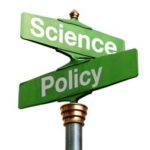 I used to teach 7th grade Science at an ethnically and culturally diverse public middle school in a suburb of Chicago. Every fall was devoted to Science Fair, and every student participated.
I used to teach 7th grade Science at an ethnically and culturally diverse public middle school in a suburb of Chicago. Every fall was devoted to Science Fair, and every student participated.
I taught my students these linear steps of the scientific method: 1) form a testable question, 2) do research, 3) hypothesize, 4) run an experiment to test the hypothesis, 5) collect data, 6) analyze the data and reach a conclusion, and 6) publish the results.
These 11- and 12-year-olds then applied the scientific method to questions like “Can blindfolded 7th graders tell the difference between Pepsi and Coke?” “Which brand of carpet cleaner is most effective on grape juice?” “Is a plant’s growth rate affected by rap music?” “Does hot water freeze faster than cold water?” (Hint: it does!)
Science Fair was a fantastic way to begin the school year!
Based on our 7th grade Science Fair, it seems that science-based questions should be straightforward to answer. We simply decide what we want to know, design an experiment to answer the question, and apply what we learn. Bam!
So why are Americans plagued by science-based questions that defy simple answers? Examples of such questions include whether to vaccinate our children, how much timber we can harvest without harming our environment, the causes of global climate change, and the safety of genetically modified organisms for people and other living things.
There are many reasons why applying science to real world problems is not easy. Entire books have been written about this issue, and I read most of them while writing my Southern Oregon University master’s thesis on this topic. (I’ll send you a PDF if you want one.)
Here are a few:
Science is carried out in a cultural context, not simply a petri dish. Natural systems are extremely complex, so segregating one variable to test is virtually impossible.
Complexity and interconnectedness of variables means scientific findings are always accompanied by uncertainty. This resulting uncertainty, which scientists freely admit, is often exploited by opponents of a particular course of action.
But the most intractable reason for bumpy application of science is that we live in a diverse society, where good citizens have differing values and objectives. Dissenters are given a voice in our lovely, messy democracy. As Americans, we value free speech. Everyone has the right to speak out. Reporters often give these minority opinions a disproportionate voice, both because of our American sense of fair play and because conflict sells.
What’s the solution?
Well, improving Americans’ scientific literacy would be a start.
Most crucially, we must come together to have civil conversations about our community and social values before we attempt to use science to answer deep questions. Real dialogue is lacking. What we have now are the opposite poles of a controversy furiously lobbing science from either end of the spectrum, over the vast, mostly unengaged middle ground.
We can do better!
